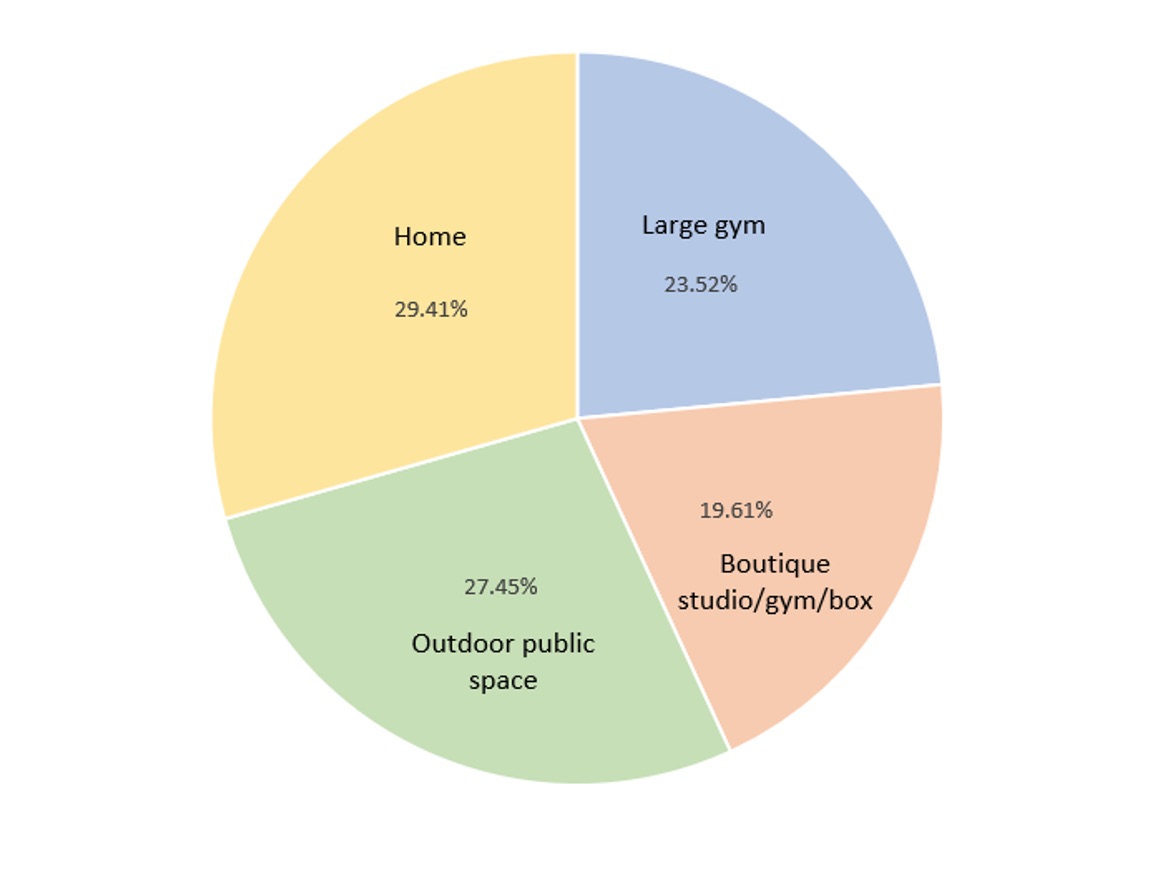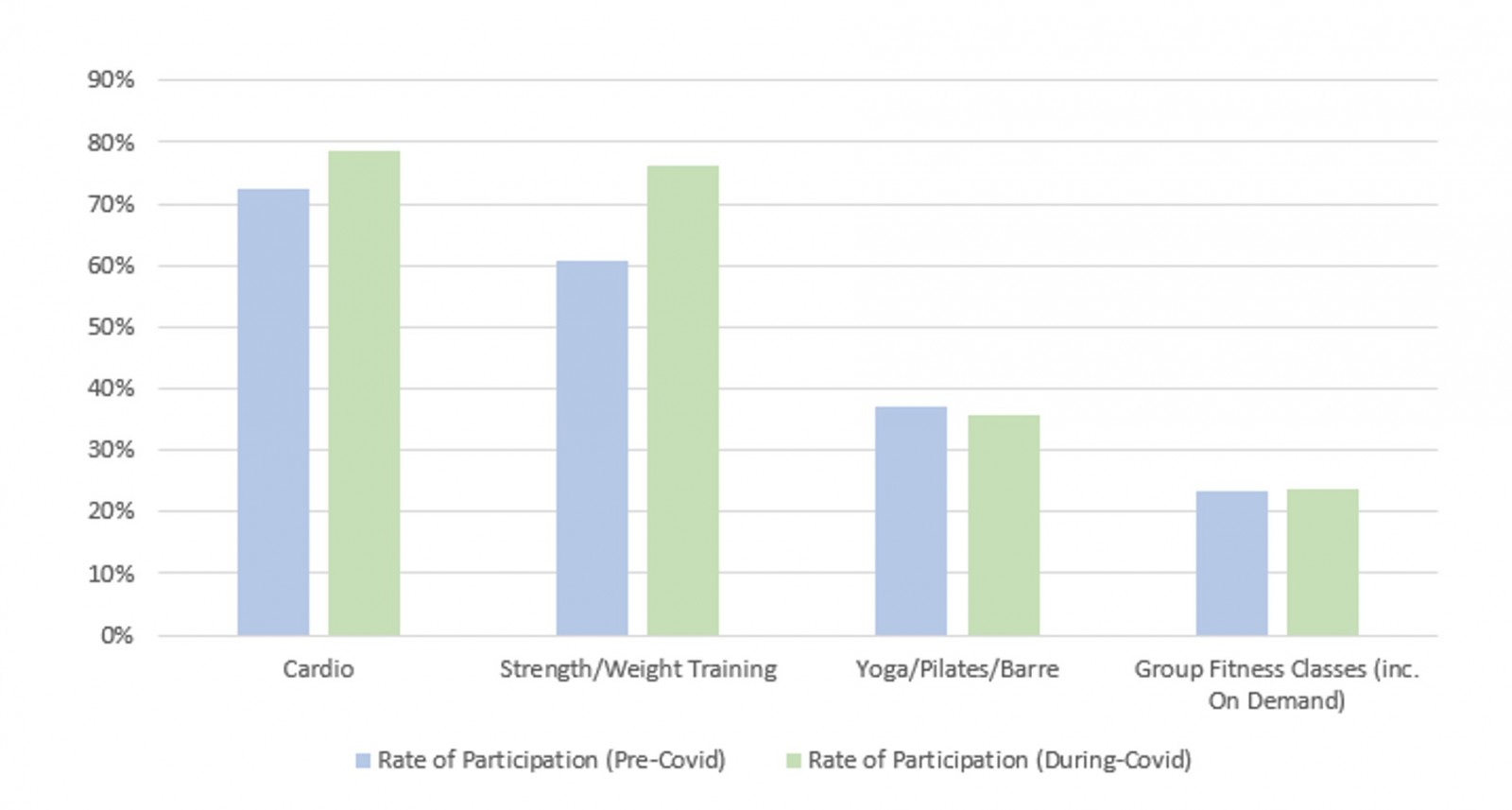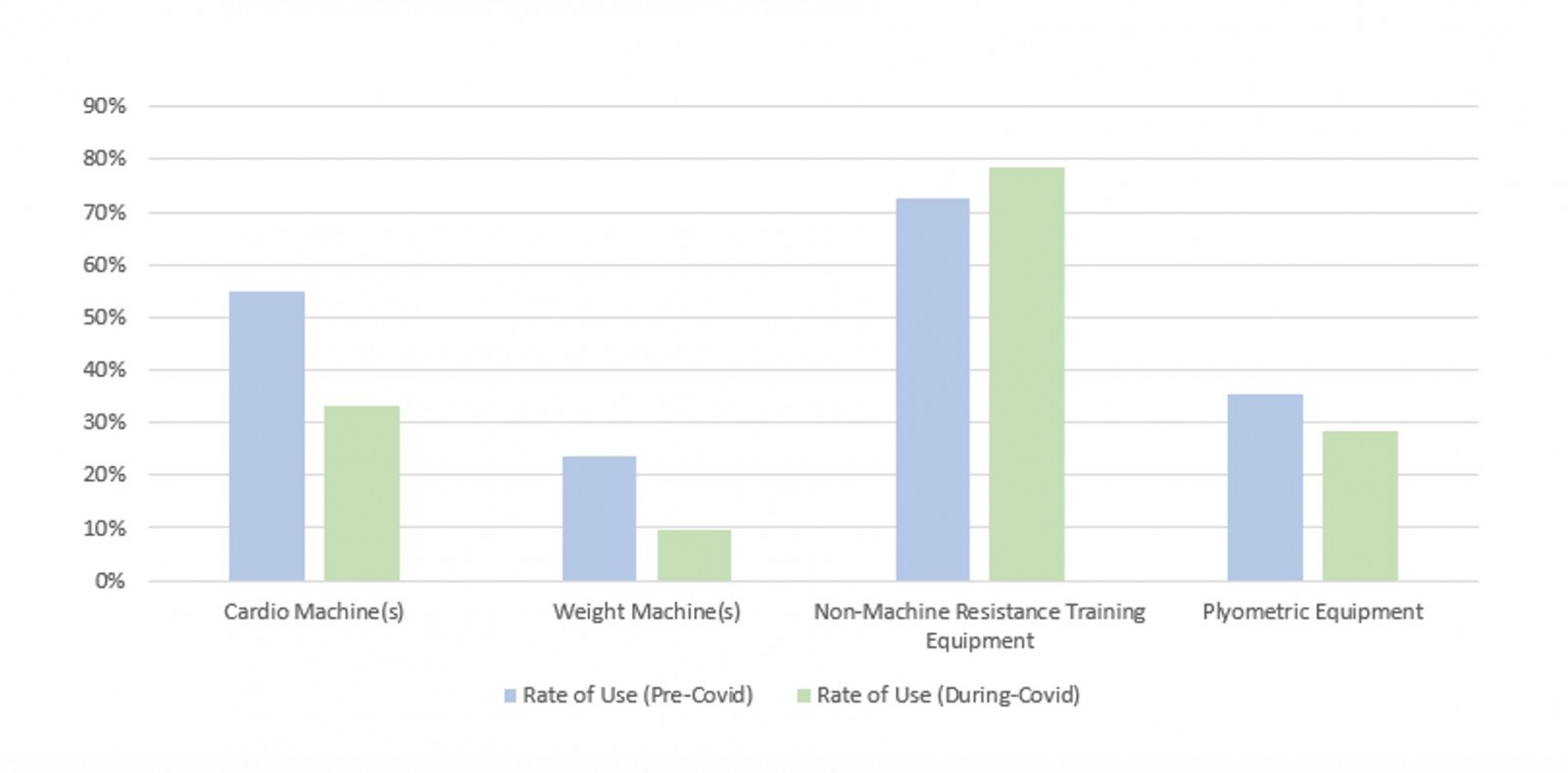 By Audra Krake, M.S., and Robyn Brinkerhoff, Ph.D., Special AFS Contributors
By Audra Krake, M.S., and Robyn Brinkerhoff, Ph.D., Special AFS Contributors
Earlier this spring, in response to widespread restrictions due to COVID-19, many fitness facilities started offering virtual fitness classes, often publicly available to anyone on the internet, on a smartphone, or connected to a smart TV.
Since the COVID-19 pandemic has continued to influence our weekly routines, we sought to investigate how exactly individuals who work out consistently - which we are defining here as someone who has, on average, worked out at least once per week for at least three months - have changed their fitness habits and behaviors over the past eight months.
We present some of our findings below with the aims of helping fitness professionals 1) gain an understanding of some of the changes people have made to their fitness routines as a result of COVID-19, and 2) gain an understanding of how they can best continue to serve their patrons during the ongoing lockdown conditions.
Survey Demographics
A total of 68 people from across the country, ranging in age from 19 to 79 years old, participated in our survey. 67.7% of respondents identified as female and 32.3% as male. Over 50% of respondents (52%) reported that they have been working out consistently for over 15 years. When asked where they primarily worked out prior to lockdown restrictions, the participants reported a variety of locations, shown in Figure 1.
Figure 1. Where participants typically worked out the most prior to COVID-19.

Changes in Fitness Habits due to COVID-19-Related Restrictions[1]
As a result of the restrictions put in place due to COVID-19, approximately 60% of our respondents stated that they have changed where and how they work out. Overall, they reported increased participation in both cardio and strength training, and while rates of participation in yoga, Pilates, or barre, and group fitness classes remained relatively consistent (see Figure 2, below).
In terms of equipment used, our respondents have increased their use of non-machine resistance training equipment, such as dumbbells, medicine balls, and resistance bands, but have decreased their use of cardio and weight machines, as well as plyometric equipment (see Figure 3).
In addition, many respondents reported having purchased equipment ranging from cardio equipment (bike, rowing machine, treadmill) to weight training equipment (bench and weight/squat rack) to plyometric equipment and resistance bands.
Figure 2. Type of workout participants engaged in before and during COVID-19-related restrictions.

Figure 3. Type of equipment used before and during COVID-19-related restrictions.

Safety-Related Behaviors
As we discussed in our prior blog post, some of the most frequent fitness-related injuries result from overexertion/undue stress placed on the body (e.g., Waryasz et al., 2016; Quatman et al., 2009). Consistent with this, two of our respondents reported overuse injuries as a result of using the equipment they had purchased.
Another common cause of injury while performing fitness activities is tripping/falling/contacting obstacles. Encouragingly, our survey results suggest that our respondents are largely cognizant of such risks and monitor their workout environments accordingly. For example, 92.5% of those that work out at home say they typically clear a proper space prior to working out. In addition, for those who reported using furniture for stability when working out at home, most reported choosing furniture primarily because of its sturdiness or height-appropriateness for the activity they were doing.
When our respondents have questions about their fitness activities, or how to safely perform them, fitness professionals are an important source of information. Many of our respondents reported that prior to COVID-19, they typically consulted a personal trainer/instructor/fitness specialist regarding a new exercise or workout, technique, safe use of equipment, and injury prevention. This reliance on fitness professions appears to have persisted throughout COVID-19-related restrictions: over 90% of our respondents stated that they have not changed their sources for such information during COVID-19.
Discussion
This survey highlights a few important points that can help you understand the current activities and needs of your clientele. First, despite the fact that many gyms and studios around the country remain closed at least in some capacity, it is encouraging that people seem to be continuing their fitness routines and adapting as necessary, even going so far as to purchase equipment in order to do so. Importantly, the rate of reported participation in group classes has not changed.
This demonstrates that many people still prefer these classes as their chosen form of exercise, and therefore, there is certainly a continued need and desire for these classes to be provided. Second, the majority of our respondents seem to be taking safety considerations into account by making sure they are using appropriate support surfaces and areas clear of obstacles when working out. This is important, as it helps minimize impact or slip and fall injuries, as well as awkward/incorrect body positions and movements (see our previous post, Virtual Fitness Classes: Safety Tips for Home Workouts).
The fact that no unusual or unexpected injuries were reported is further evidence that our respondents are largely able to perform their fitness activities relatively safely despite any modifications they have had to make during COVID-19-related restrictions. Finally, our respondents continue to seek guidance from a personal trainer/instructor/fitness specialist in many areas, including new exercises or workouts, technique, safe use of equipment, and injury prevention.
In summary, not only does our survey demonstrates that many individuals have adapted their fitness routines for the challenges posed by COVID-19-related restrictions, but it also indicates that there is still an important role to be played by fitness facilities and professionals, even from afar (or virtually), to help their patrons continue to safely and effectively pursue their fitness goals.
[1] Note that the percentages presented below are based on the number of people who answered the question; not all 68 participants answered every question.
Robyn Brinkerhoff, Ph.D. is a human factors scientist at Exponent, a science and engineering consulting firm. She earned her Ph.D. in Cognitive Psychology from UCLA and applies her knowledge of human behavior, capabilities, and limitations to the study of how people perform in everyday situations and environments, such as while using fitness equipment or navigating public spaces. Dr. Brinkerhoff frequently acts as a consultant to investigate accidents, provide expert opinions for litigation, and advise on the development of product labels and instruction manuals.
Audra Krake, M.S. is a human factors scientist at Exponent. She earned her M.S. in Kinesiology from California State University, Long Beach, with a specialty in Exercise Science, and analyzes human factors and human performance in the context of use of consumer products, such as while using sports and exercise equipment. Ms. Krake utilizes her expertise in human movement and information-processing to evaluate issues related to motor control, decision-making, and the effects of inattention and distraction as they relate to accidents, injuries, product usage, fitness training, and technique.


Join the Conversation!